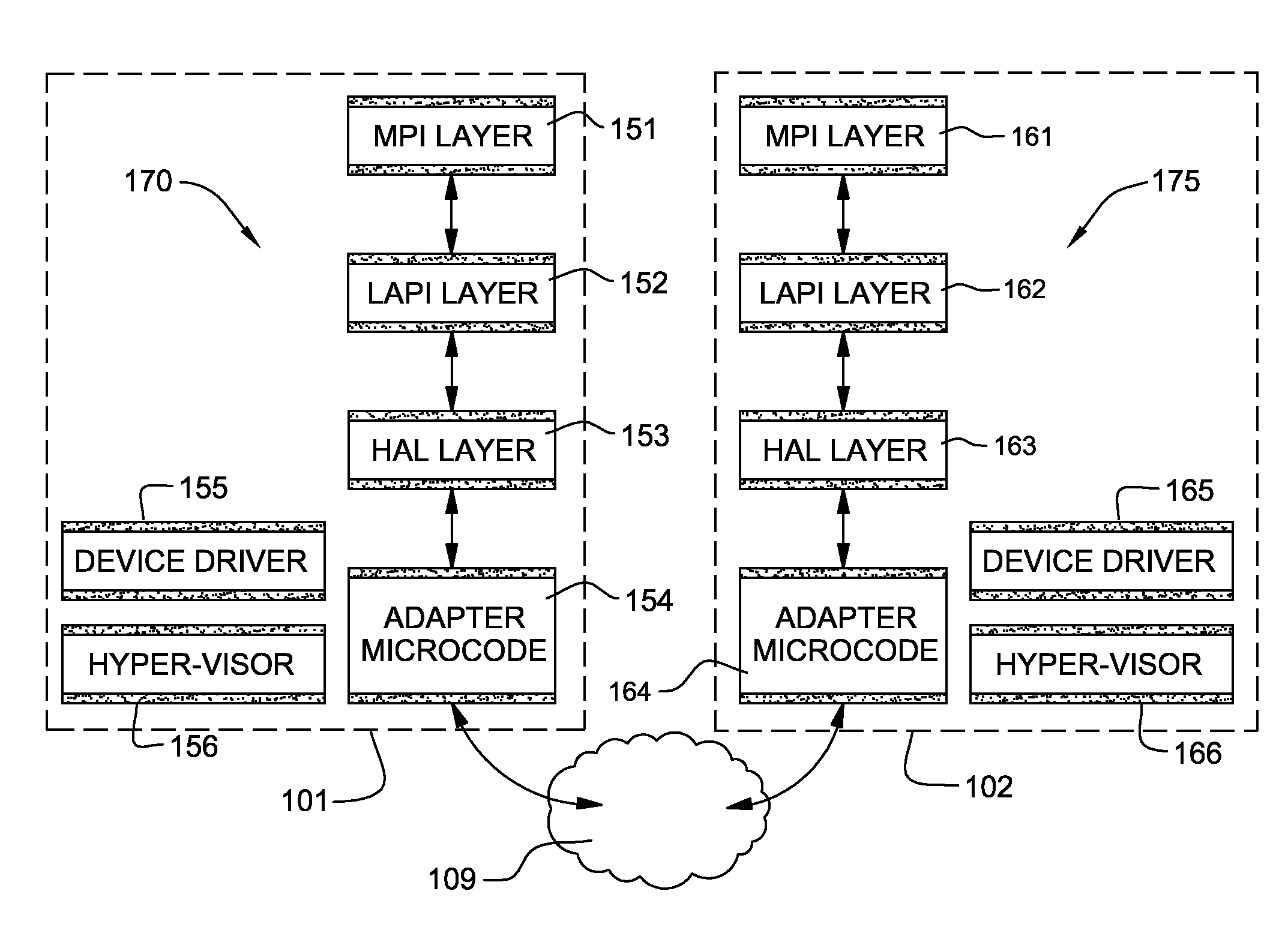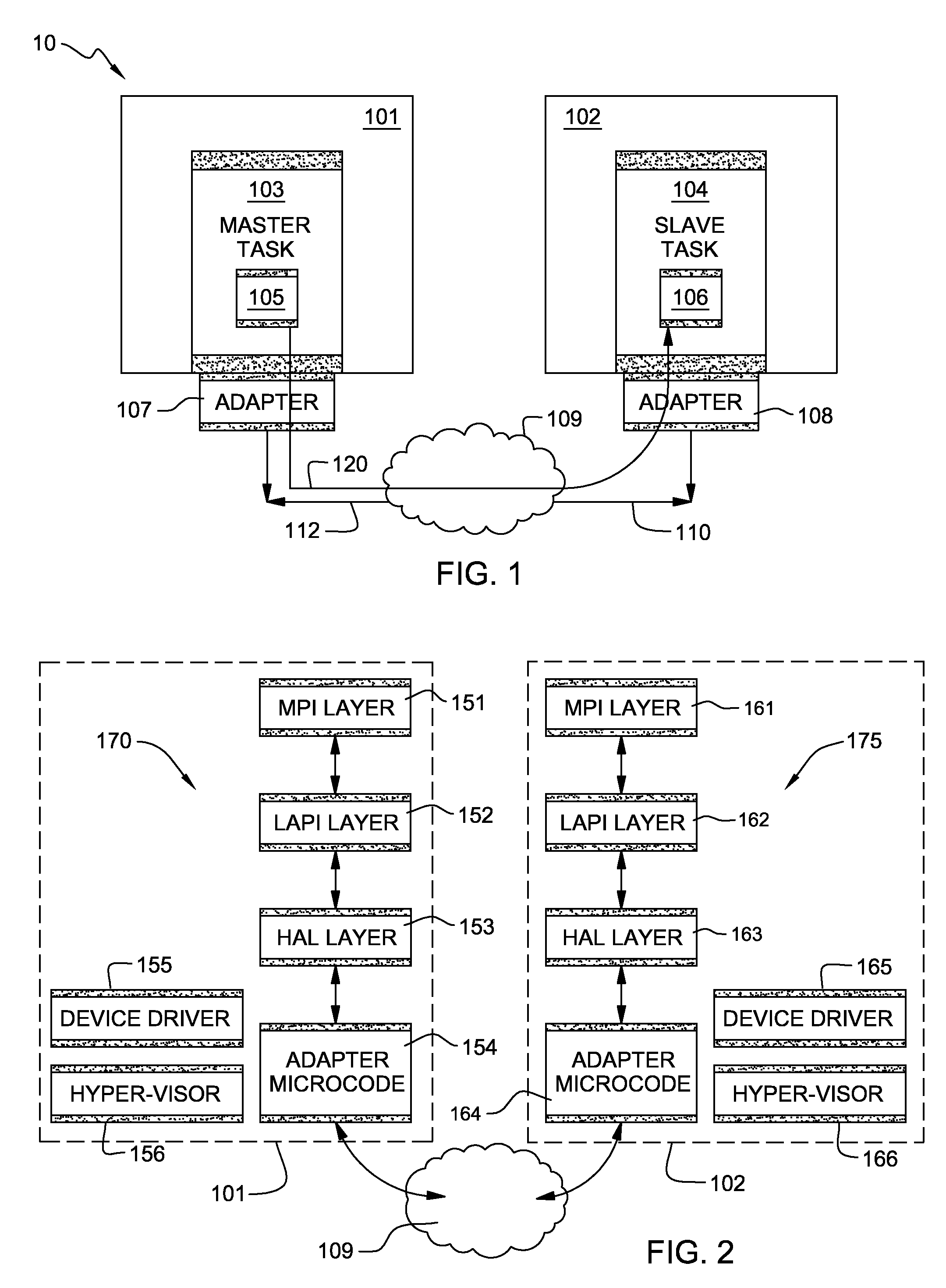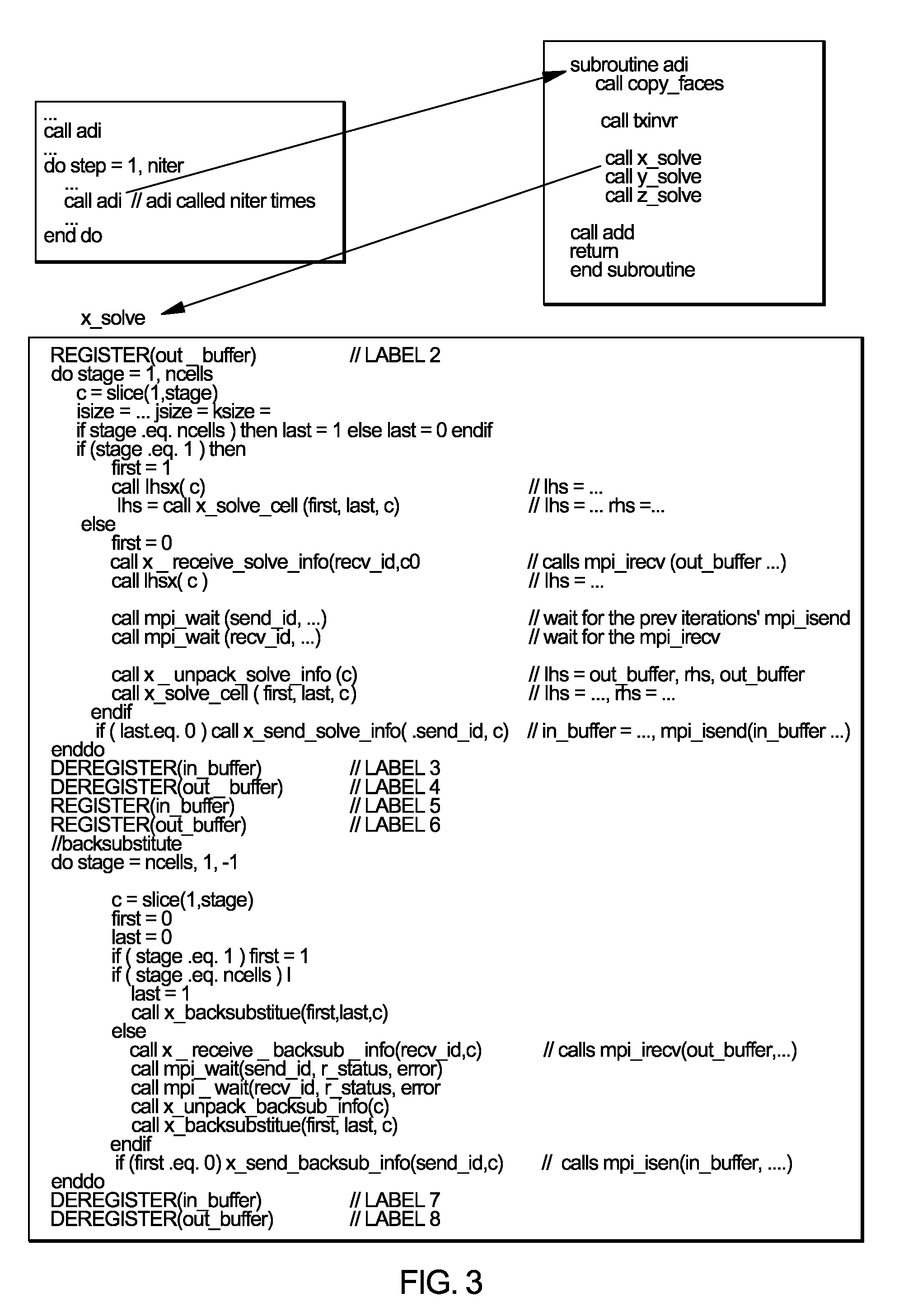Compiler driven mechanism for registration and deregistration of memory pages
a memory page and compiler technology, applied in computing, data conversion, instruments, etc., can solve the problems of insufficient capacity to independently, too expensive to perform pinning/unpinning (registration/deregistration) pages in memory, and the characteristics of packet transport through a network were considered too unreliable to permit rdma operations in such types of networks. , to achieve the effect of convenient handling
- Summary
- Abstract
- Description
- Claims
- Application Information
AI Technical Summary
Benefits of technology
Problems solved by technology
Method used
Image
Examples
Embodiment Construction
[0028]FIG. 1 is a diagram illustrating principles of remote direct memory access (RDMA). Nodes 101 and 102 are computers of a multi-processor system having a plurality of nodes connected by a network 10, as interconnected by network adapters 107, 108, a switching network 109, and links 110 and 112 between network adapters 107, 108 and the switching network 109. Within switching network 109 there are typically one or more local area networks and / or one or more wide area networks, such network(s) having a plurality of links that are interconnected by communications routing devices, e.g., switches, routers, and bridges. As such, the switching network 109 typically provides several alternative paths for communication between the network adapter 107 at node 101 and network adapter 108 at node 102.
[0029]The network 10 including nodes 101, 102 and switching network 109 need not have a reliable connection or reliable datagram transport mechanism. Rather, in the embodiments of the invention ...
PUM
 Login to View More
Login to View More Abstract
Description
Claims
Application Information
 Login to View More
Login to View More - R&D
- Intellectual Property
- Life Sciences
- Materials
- Tech Scout
- Unparalleled Data Quality
- Higher Quality Content
- 60% Fewer Hallucinations
Browse by: Latest US Patents, China's latest patents, Technical Efficacy Thesaurus, Application Domain, Technology Topic, Popular Technical Reports.
© 2025 PatSnap. All rights reserved.Legal|Privacy policy|Modern Slavery Act Transparency Statement|Sitemap|About US| Contact US: help@patsnap.com



